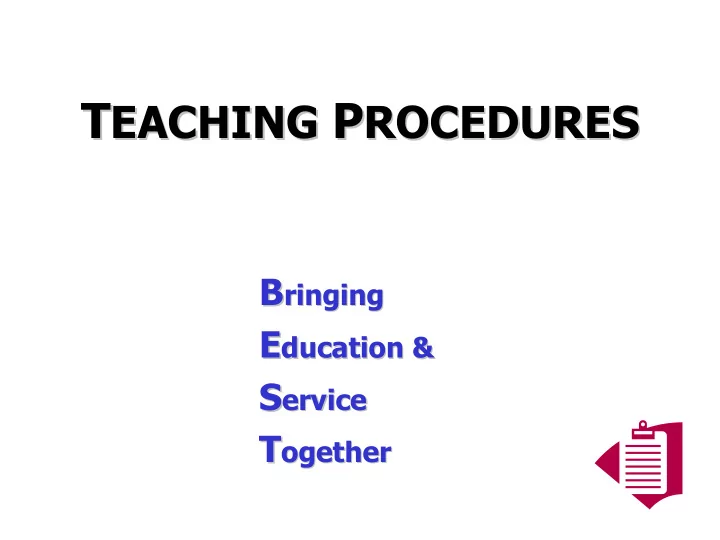

T EACHING P ROCEDURES T EACHING P ROCEDURES B ringing B ringing E ducation & E ducation & S ervice S ervice T ogether T ogether
Learning Objective Learning Objective After participating in this session, participating residents will be able to teach a learner how to perform a procedure.
Teaching Procedures Teaching Procedures 3 phases of psychomotor skills development: 1 1 2 3 Cognitive Developmental Automated Why How 1 Dunnington GL, DaRosa D. Instructor’s Guide for Teaching Residents to Teach. Springfield, IL: Association for Surgical Education (2000).
Cognitive Phase Cognitive Phase Learners first need to understand the “why” components of the procedure: o Why learn procedure? o Indications o Contraindications o Risks/complications o Benefits o Alternatives
Cognitive Phase Cognitive Phase Since adult learners prefer active learning, teach through questioning: o Has the learner done this procedure before? o What does s/he recall about indications, risks, etc.?
Cognitive Phase Cognitive Phase Then address the “how” components of learning the procedure: o Demonstrate the procedure step by step. o Ask learner to verbalize the steps. o Ask for questions.
Developmental Phase Developmental Phase • Next, learners need to practice. • Have learner demonstrate procedure for you, explaining each step. • Provide guidance for each step, both verbally and physically. • Evaluate learner’s proficiency: what did learner do right, wrong?
Developmental Phase Developmental Phase • Ask learner to self-evaluate, then give specific feedback, starting with the positive aspects of the performance. • Does the learner have any questions, now that s/he has practiced the skills?
Automated Phase Automated Phase • Finally, learners begin achieving proficiency and are ready for independent performance. • Observe performance again, this time with minimal interruption. • You can now teach the fine points.
Automated Phase Automated Phase • Encourage self-directed learning: What are the learner’s future learning goals, and how does s/he want to achieve them? What have you read or done that helped you learn procedures? • Arrange for a follow-up session.
Recommend
More recommend